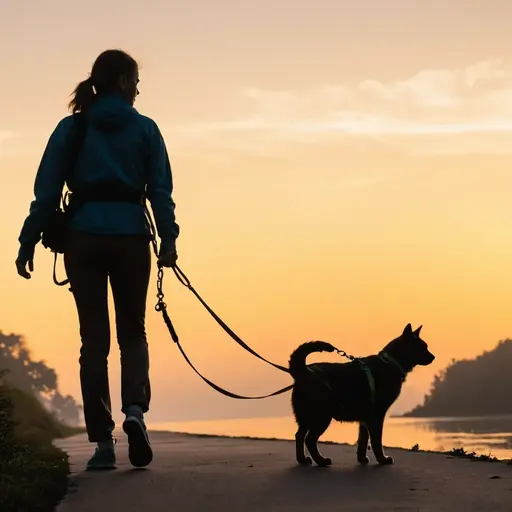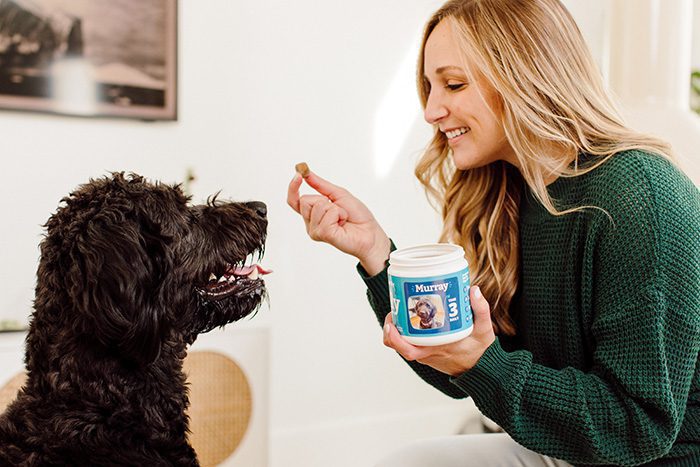Imagine teaching your dog to sit or your cat to high-five with just a click and a treat. This isn’t a scene from a movie—it’s the magic of clicker training for dogs and cats, a science-backed method that turns learning into a game.
By using a small handheld device to “click” the moment your pet performs a desired action, you’re able to communicate clearly and reward good behavior instantly. It’s like speaking your pet’s language, making it an ideal starting point for first-time trainers.
At its core, this approach relies on positive reinforcement, rewarding pets for successes rather than punishing mistakes. The result? A happier, more confident animal eager to learn. Unlike traditional methods that may intimidate or confuse, clicker training builds trust by focusing on what your pet does right.
Here’s why it’s a game-changer:
- Strengthens bonds: Shared success fosters mutual trust and understanding.
- Encourages focus: The clear “click” sound helps pets connect actions to rewards.
- Works for all personalities: Whether your dog is timid or your cat is stubborn, this method adapts to their pace.
By turning training into a collaborative adventure, you’ll unlock your pet’s potential while deepening your connection—one click at a time. Ready to explore how this simple tool can transform your relationship? Let’s dive in.
Understanding Clicker Training
What is Clicker Training for Dogs and Cats?
Clicker training is a science-based approach rooted in operant conditioning, a learning theory pioneered by psychologist B.F. Skinner. It revolves around a simple yet powerful idea: pets learn faster when they understand exactly which action earns them a reward.
The clicker—a small noisemaker—acts as a “bridge” between the desired behavior and the treat, praise, or toy that follows. Think of it as a universal language that cuts through confusion, telling your pet, “Yes! That’s exactly what I wanted!”
Here’s how it works:
- Precision Timing: The clicker pinpoints the exact moment your pet performs the desired action (e.g., sitting or touching a target).
- Immediate Reward: After the click, a reward reinforces the behavior, making it more likely to be repeated.
- Clarity Over Commands: Instead of relying on verbal cues alone, the clicker eliminates guesswork, helping pets connect their actions to outcomes.
Why It Works for Both Dogs and Cats
While often associated with dogs, clicker training is equally effective for cats—a fact that surprises many pet owners. Cats thrive on autonomy, and this method respects their independent nature.
Unlike dogs, who may aim to please, cats engage when they find value in the activity. The clicker taps into their natural curiosity: the sharp, consistent sound captures their attention, turning learning into a stimulating game.
Cats respond particularly well because:
- Short Sessions Suit Their Attention Span: Quick, focused training aligns with their preference for bursts of activity.
- Rewards Feel Like “Hunts”: Treats or playtime mimic the satisfaction of catching prey, engaging their instincts.
- No Pressure, More Progress: The absence of force reduces stress, making them more likely to participate.
Debunking Myths
Some assume cats are “untrainable” or that clickers are too complex for their aloof personalities. In reality, cats often excel with this method precisely because it’s concise and rewards-driven. A cat who walks away mid-session? That’s a cue to end on a positive note—no frustration, just progress at their pace.
By focusing on positive reinforcement for pets, clicker training transforms teaching into a collaborative experience. Whether your dog is mastering “stay” or your cat is learning to fetch, the method builds confidence, sharpens communication, and turns even the most stubborn pet into an eager learner.

Getting Started
How to Start Clicker Training Your Pet
Before diving into training, setting up the right environment and tools ensures a smooth, stress-free experience for both you and your pet. Here’s how to lay the groundwork for success:
1. Choose the Right Clicker
Not all clickers are created equal. Consider your pet’s sensitivity to sound:
- Dogs: Opt for a louder clicker to capture their attention, especially in busier environments.
- Cats: Use a softer or adjustable-volume clicker to avoid startling them—think “gentle ping” over “loud snap.”
Pro Tip: Test the clicker in your hand first. If it startles you, it might be too harsh for your pet.
2. Pick High-Value Rewards
The key to clicker training? Making rewards irresistible. Tailor treats to your pet’s preferences:
- Dogs: Small, chewy snacks like diced chicken or store-bought training treats work well. Avoid large pieces that slow down sessions.
- Cats: Prioritize strong-smelling, moist options like tuna flakes, salmon bits, or lickable treats. For finicky felines, try a favorite toy as a reward instead.
Why It Matters: High-value rewards motivate pets to repeat behaviors, speeding up learning.
3. Create a Distraction-Free Zone
Start training in a quiet, familiar space to minimize distractions:
- Dogs: A living room corner or backyard with minimal noise.
- Cats: A room with no escape routes (closed doors/windows) to keep them focused.
Bonus: Use a mat or blanket as a “training zone” to signal it’s time to work.
4. Adjust for Multi-Pet Households
If you have both dogs and cats:
- Train Separately: Avoid competition by working with one pet at a time. Use separate spaces if needed.
- Respect Boundaries: Cats may lose interest if a dog is nearby, and dogs might become overly excited. Patience is key!
5. Keep Sessions Short and Sweet
- Dogs: Aim for 5–10 minute sessions, 2–3 times daily.
- Cats: Even shorter—3–5 minutes—to match their attention span.
Sign It’s Time to Stop: If your pet loses focus, walks away, or seems stressed, end on a positive note with a final click and treat.
Final Prep Step
Before teaching commands, “charge” the clicker: Click once, then immediately give a treat. Repeat 10–15 times until your pet associates the sound with the reward. This step is crucial—skip it, and the clicker loses its power!
With these foundations in place, you’re ready to turn clicks into lifelong skills. Next, we’ll explore the first steps of teaching basic commands and tricks.
The Clicker Training Process
Step 1: Charging the Clicker—Building the Foundation
Before teaching commands, your pet must learn that the click = reward. This step, called “charging,” creates a mental link between the sound and positive outcomes.
- How to Do It:
- Click the clicker once.
- Immediately offer a treat (within half a second for maximum clarity).
- Repeat 10–15 times in quick succession.
- Success Signs: Your dog perks up at the click, or your cat sniffs the air expectantly. If they seem confused, slow down—this step might take multiple short sessions.
Step 2: Teaching Basic Behaviors—Start Simple
Begin with easy, natural actions to build confidence:
- Dogs: Teach “look at me” by clicking the moment they make eye contact. Reward instantly. Gradually add a hand signal or verbal cue.
- Cats: Introduce “target training” by holding a spoon or wand near their nose. Click when they sniff or touch it, then reward. This becomes a gateway to more complex tricks.
Why It Works: These foundational behaviors teach pets to learn how to learn, priming them for future steps.
Step 3: Shaping Complex Behaviors—Add Layers Gradually
Once basics are mastered, “shape” advanced actions by rewarding incremental progress:
- Example for Dogs: To teach “sit,” click when they naturally lower their hindquarters. Over time, wait until they’re fully seated before rewarding.
- Example for Cats: To train a “high-five,” start by rewarding a paw lift. Then, click only when the paw moves toward your hand, and finally, when it taps your palm.
Pro Tip: Use “successive approximations”—reward closer attempts until the full behavior is achieved.
Step 4: Timing Matters—Adapt to Your Pet’s Pace
- Dogs: Can handle 10–to 15-minute sessions but may need breaks if distracted. Use calm praise to reset focus.
- Cats: Keep it snappy—3–5 minutes max. End sessions before they wander off to keep enthusiasm high.
Key Insight: Cats often “self-reward” by walking away. Let them disengage without pressure; they’ll return when ready.
Step 5: Troubleshooting and Consistency
- Mismatched Timing? If your pet seems confused, revisit “charging” or slow your click-treat rhythm.
- Fading Rewards: Gradually replace treats with praise or toys, but always reward occasionally to maintain motivation.
- Stay Patient: Progress isn’t linear. Celebrate small wins—a single successful click is a victory!
Putting It All Together
Clicker training is a dance of patience and timing. By starting small, adapting to your pet’s unique rhythm, and celebrating incremental progress, you’ll unlock their ability to learn anything from “sit” to “fetch.” Up next: advanced tricks and troubleshooting common challenges.

Clicker Training Techniques for Dogs
Why Clicker Training Shines for Dogs
Dogs are eager learners, and clicker training taps into their innate desire to please. Unlike punishment-based methods, this approach turns obedience into a joyful exchange. Whether you’re teaching polite greetings or advanced agility, the clicker’s precision helps dogs connect the exact moment they’ve earned praise—making lessons stick faster.
Teaching Core Commands
Start with foundational cues that boost safety and manners:
- “Sit”:
- Hold a treat near your dog’s nose, then slowly lift it upward. As their head follows the treat, their hindquarters will lower.
- Click the instant their bottom touches the floor, then reward.
- Repeat until they sit on cue without the treat lure.
- “Stay”:
- Ask your dog to “sit,” then hold your palm out (like a stop sign) and take a step back.
- Click and reward if they remain still for 2 seconds. Gradually increase distance and duration.
- Pro Tip: Use a release word like “Okay!” to signal the end of the stay.
- “Come”:
- In a safe, enclosed area, crouch to their level and say “Come!” in an upbeat tone.
- Click when they start moving toward you, and then reward lavishly. Make this a “jackpot” moment with extra treats or playtime.
Tackling Barking with Clicker Training
Barking is a common frustration, but the clicker can help redirect this behavior.
- When your dog barks, wait for a pause. Click and reward the silence.
- Pair this with a cue like “Quiet!” over time. Consistency is key—reward calmness, never punish barking.
High-Energy Breeds: Channeling Focus
Got a Border Collie, Labrador, or Jack Russell Terrier? Their energy is an asset!
- Short, Dynamic Sessions: Train in 5–10 minute bursts to match their stamina. End each session before they get restless.
- Physical + Mental Combo: Pair tricks with movement. Teach “spin” or “jump through a hoop” to burn energy while learning.
- Real-World Practice: Use the clicker during walks to reward loose-leash walking or ignoring distractions.
Pro Tips for Success
- Consistency Rules: Always use the same verbal cues and hand signals. Mixed messages slow progress.
- Environment Matters: Start in low-distraction areas (like your living room) before moving to busier spaces.
- Celebrate Small Wins: A puppy who “sits” once has still made progress. Over time, build reliability.
Beyond Obedience
Clicker training isn’t just for commands—it’s a gateway to bonding. Use it to teach fun tricks like “roll over,” “fetch,” or even “turn off the lights” with a paw target. The more you train, the deeper your communication becomes.
Clicker Training Techniques for Cats
Why Cats Excel with Clicker Training
Cats are often seen as aloof, but beneath that independent exterior lies a brilliant hunter wired to solve puzzles and “hunt” rewards. Clicker training taps into this instinct, mimicking the thrill of the chase.
The click becomes a “prey signal,” marking the exact moment they’ve “caught” success. This method respects their autonomy while satisfying their curiosity—making even the most standoffish cat an enthusiastic participant.
Technique 1: Teaching “Come When Called”
Turn your cat’s love of exploration into a reliable recall:
- Start Hungry: Use mealtime to your advantage. Shake their food container and say their name.
- Click + Reward: As they approach, click and offer a bite of food. Repeat until they associate the sound with the reward.
- Add Distance: Gradually call them from another room. Celebrate with play or treats when they arrive.
Why It Works: Cats learn to view you as a source of “prey,” strengthening your bond.
Technique 2: Target Training—The Gateway Skill
Teaching your cat to touch a target (like a spoon or wand) unlocks advanced tricks:
- Present the Target: Hold it near their nose. Most cats will sniff or bump it instinctively.
- Click + Treat: Reward the first touch, then gradually move the target further.
- Add a Cue: Say “Touch!” as they interact with the target.
Pro Tip: Use this skill to guide them into a carrier or onto a lap!
Technique 3: The “High-Five” Trick
Cats love showing off—here’s how to teach this crowd-pleaser:
- Lure with a Treat: Hold a treat in a closed fist near their paw.
- Click for Lift: When they lift a paw to bat at your hand, click and reward.
- Shape the Motion: Wait until they tap your palm, then add the cue “High-five!”
Bonus: Pair it with a raised hand signal for a truly “conversational” trick.
Redirecting Scratching to a Post
Save your furniture by making the scratching post irresistible:
- Click for Curiosity: When your cat sniffs or approaches the post, click and reward.
- Capture the Action: Click as they lift a paw to scratch, then treat.
- Make It a Game: Drag a toy mouse over the post—reward any interaction.
Why It Works: Cats scratch to mark territory. The clicker turns the post into a “hunting ground” they’ll return to.
Timing Is Everything
- Short Bursts: Train when your cat is naturally active (e.g., dawn or dusk).
- End on a High Note: Quit while they’re still engaged—even if it’s mid-session.
- Respect Their Rhythm: A cat who walks away isn’t being stubborn—they’re signaling it’s time to pause.
The Secret Sauce: Hunting Mindset
Cats thrive when training feels like a hunt:
- Mimic Prey Movement: Use a laser pointer or feather wand to spark their chase instinct.
- Reward with “Catches”: Let them “earn” treats by stalking, pouncing, or solving puzzles.
- Keep It Unpredictable: Vary treat placement and cues to keep their inner hunter engaged.
Final Insight
Clicker training isn’t about bending cats to your will—it’s about speaking their language. By honoring their instincts and celebrating tiny victories, you’ll transform training into a game they’ll beg to play. Next, we’ll tackle troubleshooting and advanced tricks for curious felines.

Tips for Success
Overcoming Challenges in Clicker Training for Dogs and Cats
Even with the best intentions, hurdles can arise. Here’s how to navigate common obstacles and keep training on track:
Avoid Overclicking and Rushing
- The Problem: Clicking too often or moving to advanced steps too quickly can confuse pets.
- Solution:
- Pause between clicks to give your pet time to process the reward connection.
- Master one behavior before introducing the next. For example, ensure your dog reliably “sits” before teaching “stay.”
Troubleshooting Lack of Interest
If your pet ignores the clicker:
- Upgrade the Reward: Swap kibble for diced chicken (dogs) or tuna flakes (cats).
- Simplify the Environment: Turn off TVs, close windows, or train in a hallway to minimize distractions.
- Check the Clicker Volume: A loud clicker might scare cats; a muffled one (wrap it in a cloth) could help.
Consistency Builds Confidence
- Daily Practice: Aim for 3–5 short sessions (3–10 minutes, depending on the pet).
- Same Cues, Same Rewards: Use consistent phrases (“Sit!”) and gestures to avoid mixed signals.
- Pro Tip: End each session with a success—even if it’s just one perfect “click”—to keep motivation high.
Training in Multi-Pet Households
Balancing dogs and cats requires strategy:
- Separate Sessions: Train pets in different rooms or use baby gates to prevent food stealing.
- Distinct Rewards: Use fish-based treats for cats and meaty snacks for dogs to avoid competition.
- Leverage Scent Markers: Rub a treat’s scent on the cat’s training mat to deter the dog from invading their space.
Celebrate Small Wins
- Track Progress: Note improvements, like your cat touching a target twice in a row or your dog holding a “stay” for 5 seconds.
- Stay Patient: Cats may take days to master a trick, while dogs might need weeks for complex commands. Focus on incremental growth.
When to Adjust Your Approach
- Signs of Stress: Yawning, flattened ears, or avoidance mean it’s time to pause.
- Recharge the Clicker: If your pet loses interest, “recharge” the clicker with a quick refresher session (click + treat x10).
Final Thought
Clicker training is a marathon, not a sprint. By respecting your pet’s pace, adapting to their needs, and celebrating tiny triumphs, you’ll build a lifelong bond rooted in trust. Whether you’re teaching a dog to “heel” or a cat to “spin,” patience and creativity will turn challenges into victories.
Frequently Asked Questions
Can older dogs or cats learn clicker training?
Absolutely! Age is no barrier. While kittens and puppies often learn quickly, older pets frequently excel due to their longer attention spans.
- Dogs: Start with 5-minute sessions to prevent fatigue.
- Cats: Use high-value treats and keep training playful—think of it as “puzzle time.”
Key Insight: Older pets may need more repetition, but their maturity often leads to focused, deliberate progress.
Do I always need treats for clicker training?
Nope! Treats are ideal for early stages, but you can phase them out over time:
- Transition Tip: Replace 50% of treats with praise, toys, or cuddles once the behavior is learned.
- Variable Reinforcement: Reward unpredictably (e.g., every 3rd click) to keep your pet guessing and engaged.
Pro Move: Use a mix of rewards to match your pet’s mood—sometimes a treat, sometimes a belly rub.
What if I don’t have a clicker?
No clicker? No problem. Use a consistent sound as a “marker”:
- Options: A pen click, a snap of your fingers, or a sharp “Yes!” or “Good!”
- Consistency Rules: Always use the same sound and tone to avoid confusion.
Can I train my dog and cat together?
Yes, but with boundaries:
- Separate Sessions: Train pets individually to prevent food stealing or distraction.
- Distinct Rewards: Use fish-based treats for cats and meaty ones for dogs to avoid squabbles.
- Shared Cues: Teach both pets the same command (e.g., “Sit”) but adjust rewards to their preferences.
How long should each session be?
- Dogs: 5–15 minutes, depending on energy levels.
- Cats: 3–5 minutes (they’re sprinters, not marathoners!).
Sign It’s Too Long: If your pet loses focus, ends the session early, or seems stressed.
My pet ignores the clicker. What now?
- Audit Your Rewards: Are they enticing enough? Upgrade to smellier, tastier options.
- Simplify the Environment: Turn off background noise or train in a hallway.
- Recharge the Clicker: Spend 2 minutes clicking and treating (no commands) to rebuild the association.
Will the clicker scare my pet?
Rarely. Start by clicking softly and pairing it with a treat. If they flinch, muffle the sound with a towel or try a quieter alternative (e.g., a spoon tap).
Final Note
Every pet learns differently, but clicker training’s flexibility makes it adaptable to all personalities. Whether you’re using treats, toys, or a DIY clicker, the goal is to create a dialogue of trust and fun. Stick with it—your patience will pay off in purrs, tail wags, and shared triumphs!
Conclusion: Strengthen Your Bond, One Click at a Time
Clicker training isn’t just about teaching commands—it’s about unlocking a deeper connection with your pet. Whether you’re guiding a dog to “stay” or coaching a cat to “high-five,” every click and treat becomes a shared language of trust. This method works because it respects your pet’s individuality, turning learning into a game both species can enjoy.
Why It’s Worth It:
- For Dogs: Channel their enthusiasm into skills that boost safety and companionship.
- For Cats: Tap into their curiosity, transforming “untrainable” felines into eager learners.
- For You: Enjoy the joy of watching your pet’s confidence grow—one tiny victory at a time.
Start Small, Dream Big
Begin with a single behavior, like “sit” or “touch a target.” Celebrate the first successful click, and let that momentum carry you forward. Remember, even the most complex tricks start with a single step.
Your Next Move
Grab a clicker (or a spoon!), choose a high-value treat, and dedicate 5 minutes today to connect with your pet. Watch how a little patience and a lot of positivity can transform your relationship.
Ready to Begin?
The journey from confusion to clarity starts with a click. Try it today—your pet’s wagging tail or curious purr will thank you.



